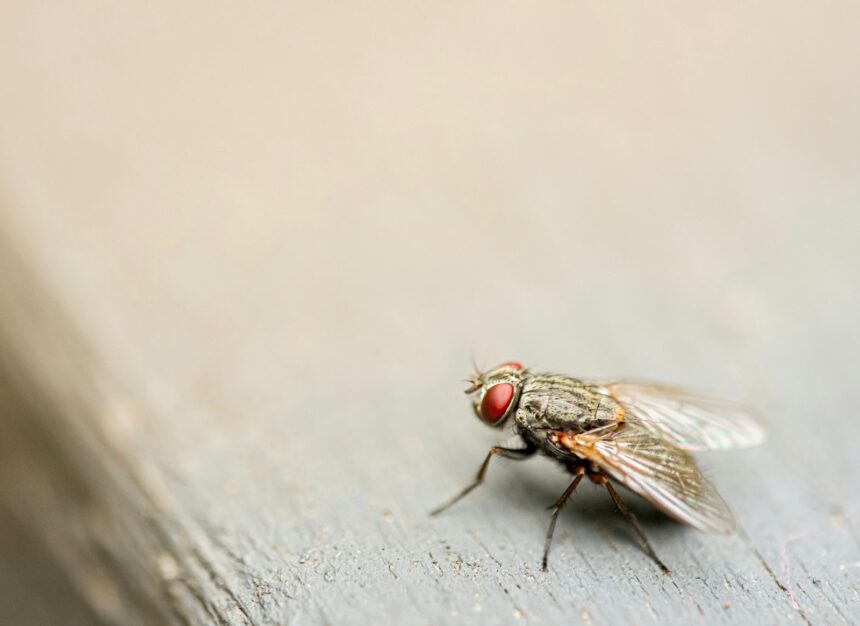It is hard to enjoy summer fully when flies are buzzing around the kitchen, dining room, or even your living room. They sneak in through open windows or doors, always uninvited and somehow always finding food no matter how clean you think everything is. Most people try sprays or gadgets, but few look into what is already sitting right in the kitchen cabinet.
You have probably already spent time swatting them, waving your hands in frustration, and maybe even investing in traps or flypaper. Yet these solutions often fall short or feel like temporary patches. If you have reached the point of giving up or considering expensive chemical options, pause for a second.
Sometimes the answer is the simplest one. There is something already within reach — and it smells much better than any commercial repellent. What if you could make those flies leave without lifting more than a spoon?
Forget Sprays and Traps: Start with Spices
Most chemical repellents can leave behind an unpleasant scent or residue. Worse, some may affect indoor air quality or pose risks for children and pets. Instead of chasing flies with a spray bottle or sticking sticky tape on your windows, you might want to reach into your spice rack.
Common spices like cinnamon, cayenne pepper, and bay leaves have something special in common — flies cannot stand them. Their scent, although pleasing to humans, overwhelms the tiny sensory systems of these pests and makes your space much less attractive.
All you need to do is scatter these spices where the flies tend to gather. Your kitchen counter, window sills, and the area around the garbage bin are perfect starting points. If you use them together, you might notice a drop in fly activity much faster than expected.
Cinnamon: More Than Just a Sweet Aroma
Cinnamon does not just make cookies taste better. It contains a compound called eugenol that interferes with the way flies detect smells. To them, cinnamon is disorienting and deeply unpleasant. Sprinkling it in key places not only keeps flies away but also leaves your kitchen smelling like freshly baked treats.
Try placing a pinch of ground cinnamon on a damp cloth and leaving it near open windows or food prep areas. It can also be mixed with a few bay leaves and left at the bottom of the trash can, where flies usually hang out.
Cayenne Pepper: A Natural Defense That Works
Flies are easily irritated by strong smells, and cayenne pepper delivers just that. Its pungent odor is more than just annoying to them — it affects their nervous system. The compound responsible is capsaicin, which triggers intense discomfort and confusion in insects.
You do not need to use a lot. Just a small sprinkle near fruit bowls or pet food dishes can help create an invisible boundary. Combine it with other spices for an even stronger result. The flies will not stay where cayenne lingers.
Bay Leaves: Subtle but Powerful
Bay leaves might seem too mild to be effective, but do not underestimate them. Their essential oils release a scent that insects instinctively avoid. Placing a few dry leaves in kitchen drawers or behind jars can keep flies from settling in those quiet corners.
Although their smell is less aggressive than cayenne or cinnamon, bay leaves offer a more long-lasting solution. You can place entire leaves in pantry shelves or grind them up and mix with other spices for more coverage.
The Combo That Makes All the Difference
For the best effect, combine these three natural ingredients. Add cinnamon, cayenne pepper, and bay leaves into a bowl and place it near the back door, next to the fruit basket, or near any area where flies tend to gather. You can even tuck the mixture into a mesh bag and hang it in the kitchen.
The result is a natural repellent that not only protects your space but also costs very little. Most importantly, it does not involve chemicals or complicated setups. It is safe for your family and smells pleasant enough to blend in with the rest of your home.
Stop Wasting Money on Products That Do Not Work
Flies may be a part of summer, but they do not have to ruin your comfort at home. With ingredients you already own, you can send them packing without fuss. No special devices, no toxic sprays — just a few spices, a little effort, and the will to try something different.
Next time a fly buzzes by your sandwich, you will not be running for the fly swatter. Instead, you will smile, reach for your spice cabinet, and let your kitchen do the rest.










